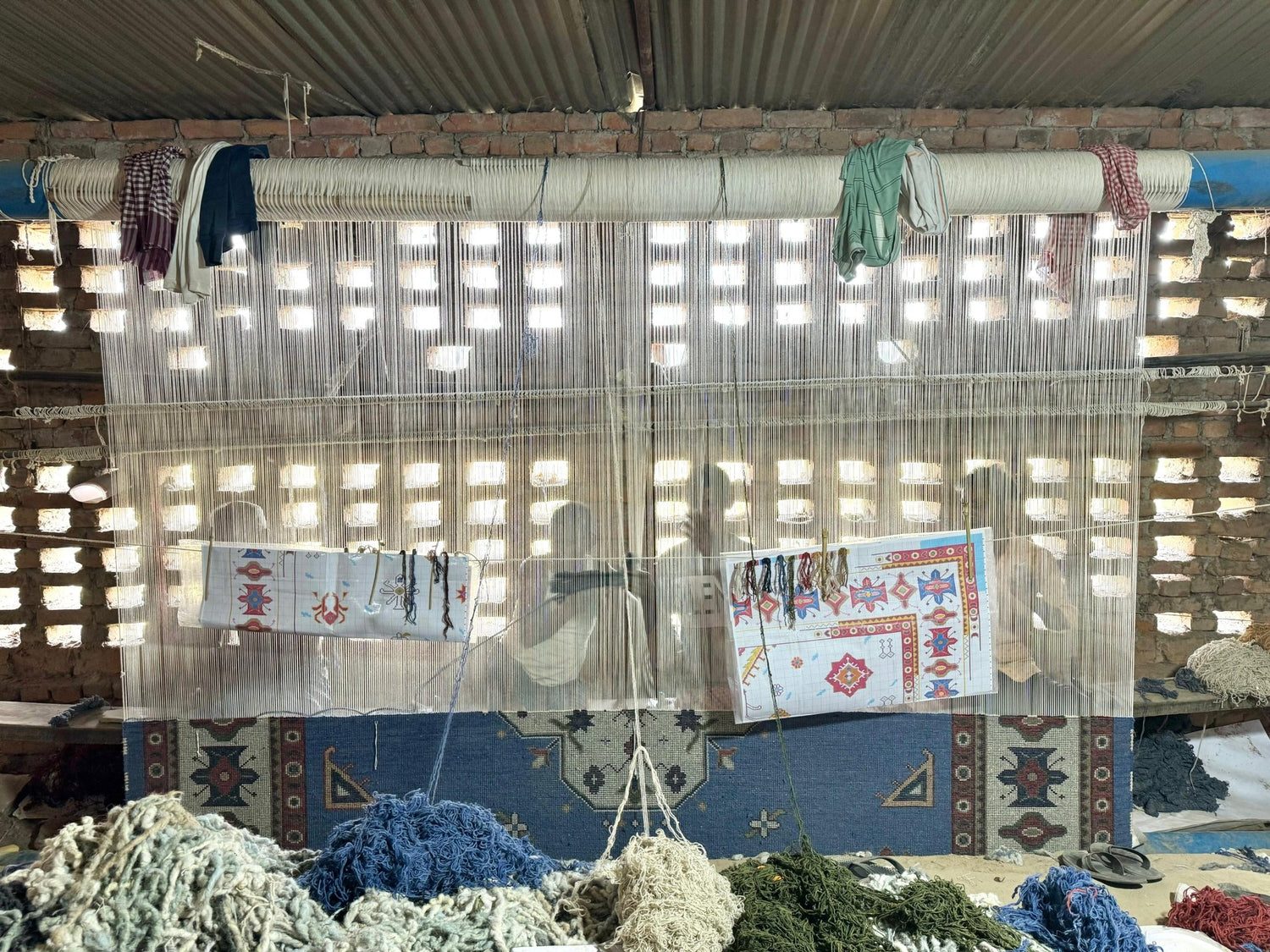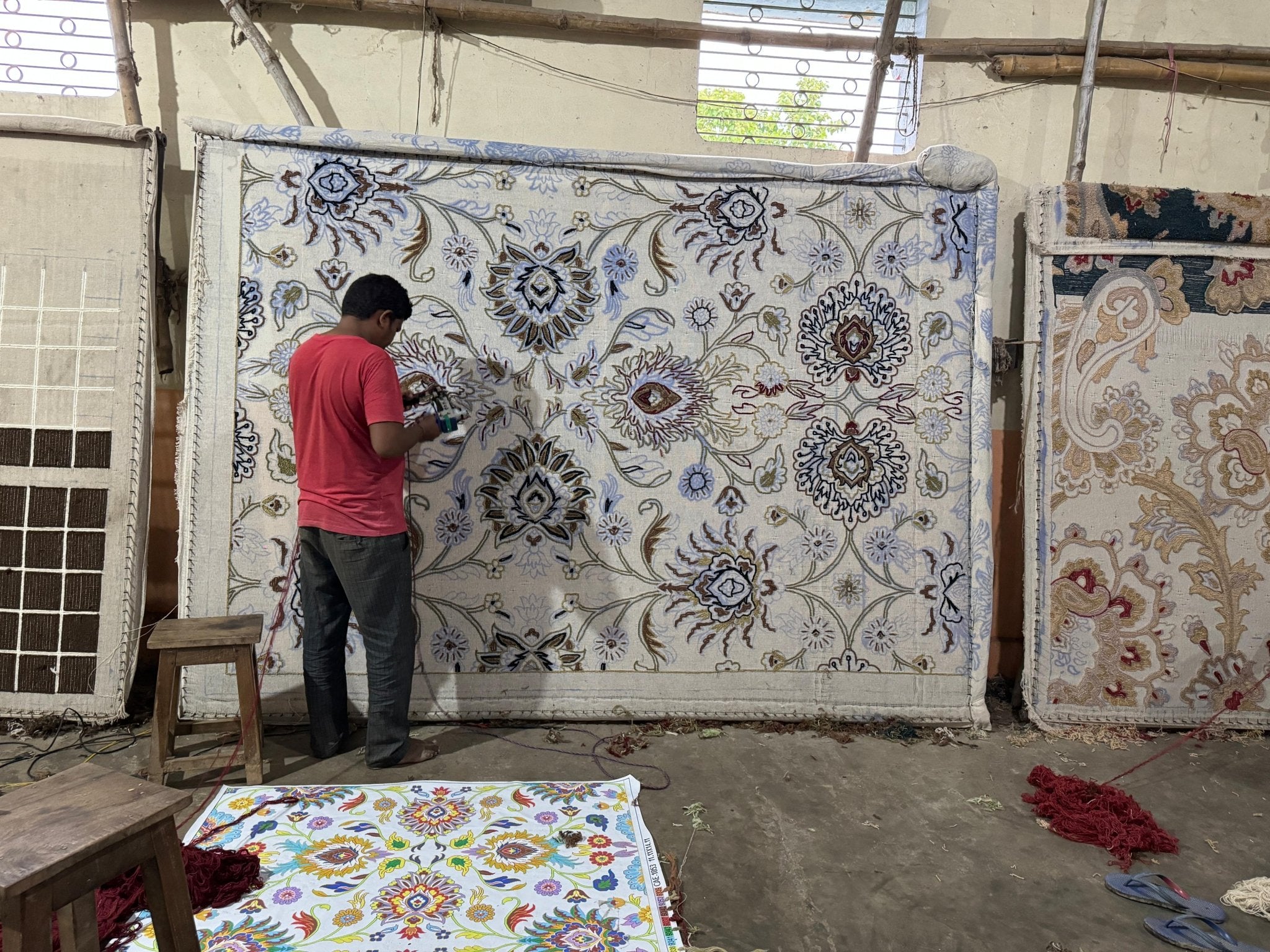Bhadohi, a small yet globally renowned city in the Indian state of Uttar Pradesh, holds a special place in the history of rug-making. Known as the "Carpet City of India," Bhadohi is synonymous with exquisite craftsmanship, vibrant designs, and a legacy that spans centuries. This region is celebrated for its handmade carpets, which have captivated the world with their intricate patterns and impeccable quality. Let’s dive into the fascinating history of Bhadohi rugs and explore the cultural significance of this timeless art form.
Origins of Rug Weaving in Bhadohi
The art of rug weaving in Bhadohi dates back to the Mughal era. It is believed that Persian artisans, invited by Mughal emperors, introduced carpet weaving to India. These artisans brought with them their expertise, tools, and designs, which merged seamlessly with local Indian artistry to create something truly unique. Over time, Bhadohi emerged as a prominent hub for rug-making due to its strategic location, abundant resources, and skilled labor.
Evolution Through the Ages
Mughal Influence During the 16th and 17th centuries, Bhadohi rugs were heavily influenced by Persian styles, featuring floral motifs, medallions, and intricate borders. The Mughals not only patronized the craft but also established weaving centers to support artisans.
Colonial Period The British era saw a shift in the production of Bhadohi carpets. While the designs remained rooted in tradition, the focus expanded to cater to European tastes. The carpets produced during this period were often larger and featured simpler patterns to align with the minimalist aesthetics of Western buyers.
Post-Independence Era After India gained independence, Bhadohi’s rug-making industry witnessed significant growth. Cooperative societies were formed to protect the interests of artisans, and the government began to recognize the economic potential of the craft. Exports flourished, and Bhadohi rugs found their way into homes and establishments across the globe.
Unique Features of Bhadohi Rugs
Craftsmanship Each Bhadohi rug is a masterpiece of manual labor, often taking months or even years to complete. Artisans use traditional hand-knotting techniques to create durable and visually stunning pieces.
Materials Bhadohi rugs are made using high-quality materials such as wool, silk, and cotton. The choice of material often dictates the texture, durability, and price of the rug.
Designs and Patterns Bhadohi rugs are known for their diverse patterns, ranging from intricate floral designs to geometric shapes. Traditional motifs often reflect the rich cultural heritage of the region, blending Indian and Persian influences.
Bhadohi’s Global Recognition
Bhadohi has earned several accolades for its contribution to the global carpet industry. In 2010, the town received the Geographical Indication (GI) tag, which certifies the authenticity and origin of its rugs. Today, Bhadohi is one of the largest exporters of handmade carpets in India, with markets in the United States, Europe, and the Middle East.
Challenges and the Road Ahead
Despite its success, Bhadohi’s rug-making industry faces several challenges. These include:
Declining Artisan Population Younger generations are reluctant to take up the craft due to low wages and labor-intensive processes.
Competition Machine-made carpets from countries like China and Turkey pose a significant threat to Bhadohi’s handmade industry.
Sustainability Issues The use of synthetic dyes and materials has raised environmental concerns.
To address these challenges, initiatives are being taken to modernize the industry while preserving its traditional essence. Efforts include introducing eco-friendly dyes, providing financial support to artisans, and leveraging digital platforms for marketing and sales.
Conclusion
The history of Bhadohi rugs is a testament to India’s rich cultural heritage and the resilience of its artisans. These carpets are more than just decorative pieces; they are stories woven with passion, skill, and tradition. As Bhadohi continues to adapt to modern demands while honoring its legacy, its rugs will undoubtedly remain a cherished part of global artistic heritage for generations to come.




Leave a comment
This site is protected by hCaptcha and the hCaptcha Privacy Policy and Terms of Service apply.